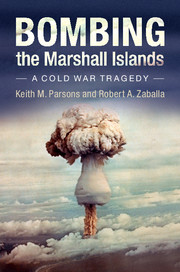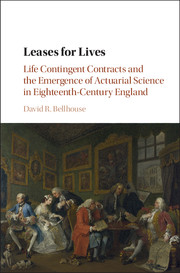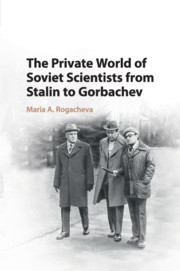Refine search
Actions for selected content:
13588 results in History of science and technology

Bombing the Marshall Islands
- A Cold War Tragedy
-
- Published online:
- 09 August 2017
- Print publication:
- 26 July 2017
Bibliography
-
- Book:
- Astral Sciences in Early Imperial China
- Published online:
- 27 July 2017
- Print publication:
- 03 August 2017, pp 230-251
-
- Chapter
- Export citation
Appendix Co-ordinates
-
- Book:
- Astral Sciences in Early Imperial China
- Published online:
- 27 July 2017
- Print publication:
- 03 August 2017, pp 225-228
-
- Chapter
- Export citation
4 - Reverent Accordance with Prodigious Heaven
-
- Book:
- Astral Sciences in Early Imperial China
- Published online:
- 27 July 2017
- Print publication:
- 03 August 2017, pp 140-176
-
- Chapter
- Export citation
1 - The World Below
-
- Book:
- Astral Sciences in Early Imperial China
- Published online:
- 27 July 2017
- Print publication:
- 03 August 2017, pp 9-49
-
- Chapter
- Export citation
Figures
-
- Book:
- Astral Sciences in Early Imperial China
- Published online:
- 27 July 2017
- Print publication:
- 03 August 2017, pp ix-x
-
- Chapter
- Export citation
5 - What the Ancients Had Yet to Learn
-
- Book:
- Astral Sciences in Early Imperial China
- Published online:
- 27 July 2017
- Print publication:
- 03 August 2017, pp 177-212
-
- Chapter
- Export citation
3 - Granting the Seasons
-
- Book:
- Astral Sciences in Early Imperial China
- Published online:
- 27 July 2017
- Print publication:
- 03 August 2017, pp 95-139
-
- Chapter
- Export citation
Acknowledgements
-
- Book:
- Astral Sciences in Early Imperial China
- Published online:
- 27 July 2017
- Print publication:
- 03 August 2017, pp xi-xii
-
- Chapter
- Export citation
6 - Conclusion
-
- Book:
- Astral Sciences in Early Imperial China
- Published online:
- 27 July 2017
- Print publication:
- 03 August 2017, pp 213-224
-
- Chapter
- Export citation
Dedication
-
- Book:
- Astral Sciences in Early Imperial China
- Published online:
- 27 July 2017
- Print publication:
- 03 August 2017, pp v-vi
-
- Chapter
- Export citation
Introduction
-
- Book:
- Astral Sciences in Early Imperial China
- Published online:
- 27 July 2017
- Print publication:
- 03 August 2017, pp 1-8
-
- Chapter
- Export citation
Abbreviations
-
- Book:
- Astral Sciences in Early Imperial China
- Published online:
- 27 July 2017
- Print publication:
- 03 August 2017, pp 229-229
-
- Chapter
- Export citation
Index
-
- Book:
- Astral Sciences in Early Imperial China
- Published online:
- 27 July 2017
- Print publication:
- 03 August 2017, pp 252-257
-
- Chapter
- Export citation
Copyright page
-
- Book:
- Astral Sciences in Early Imperial China
- Published online:
- 27 July 2017
- Print publication:
- 03 August 2017, pp iv-iv
-
- Chapter
- Export citation
Contents
-
- Book:
- Astral Sciences in Early Imperial China
- Published online:
- 27 July 2017
- Print publication:
- 03 August 2017, pp vii-viii
-
- Chapter
- Export citation
2 - Observing the Signs
-
- Book:
- Astral Sciences in Early Imperial China
- Published online:
- 27 July 2017
- Print publication:
- 03 August 2017, pp 50-94
-
- Chapter
- Export citation

Astral Sciences in Early Imperial China
- Observation, Sagehood and the Individual
-
- Published online:
- 27 July 2017
- Print publication:
- 03 August 2017

Leases for Lives
- Life Contingent Contracts and the Emergence of Actuarial Science in Eighteenth-Century England
-
- Published online:
- 26 July 2017
- Print publication:
- 14 July 2017

The Private World of Soviet Scientists from Stalin to Gorbachev
-
- Published online:
- 26 July 2017
- Print publication:
- 10 July 2017
